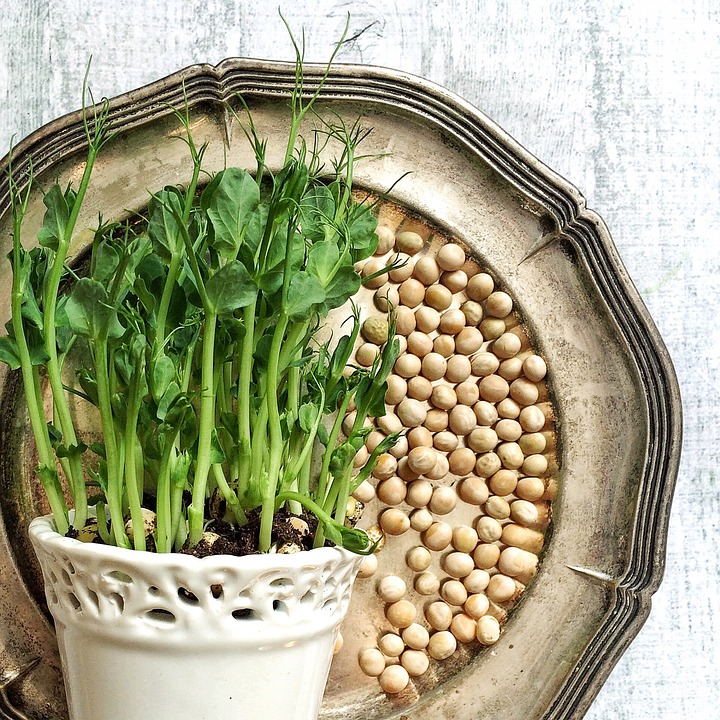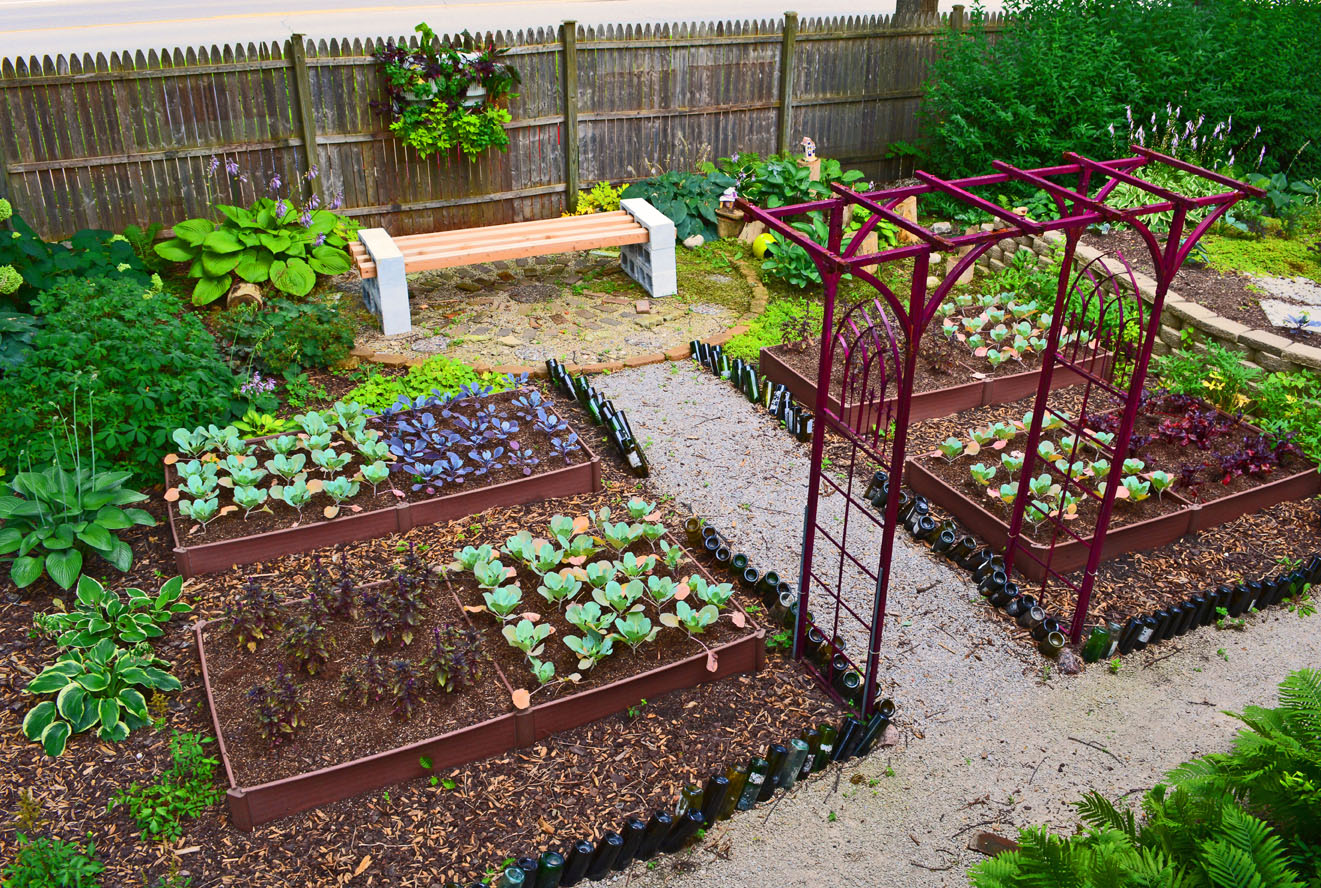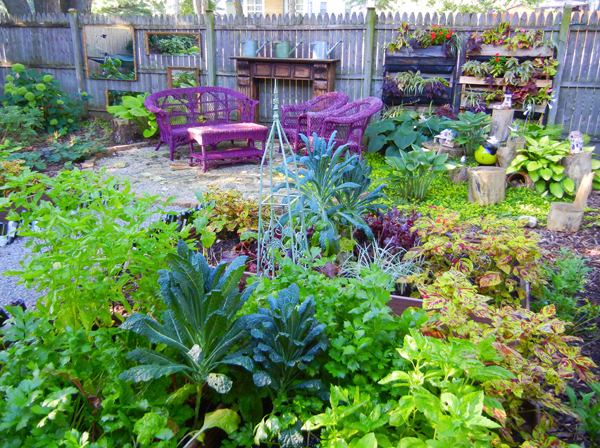Microgreens – Grow Inside for Food Security

Microgreens are the super-heroes of the salad world; they are teeny-tiny little plants with higher levels of nutrients per pound than full-sized plants. These nutrients include vitamins, antioxidants, minerals, and other compounds such as polyphenols. When we discuss FOOD SECURITY, a microgreen is at the top of the pyramid for being most nutritious, but takes up very little space or cost to grow.
According to the US Department of Agriculture, microgreens are filled with concentrated levels of nutrients which can be up to 40 times those of mature-leaved plants. Because of their bold colors and intense flavors, they are often called “salad confetti” and are an excellent choice as a salad, in soups, on sandwiches, in smoothies, or as a beautiful garnish. Microgreens have many health benefits. They can be grown in less than a few weeks, which makes it possible to have multiple plantings and harvests per season.
Who Can Grow Mini Plants?
Anyone can grow these plants as they are super-easy to grow both outdoors and indoors. This means that they can be a solution to your family’s food security concerns. Can’t afford a lot of fresh vegetables because you are having financial worries? Growing your own microgreens can save money and provide intense levels of dense nutrients at every meal. This means, of course, that you can supplement your home grocery and food supply with stronger levels of nutrition for a lower cost if you buy the seeds in bulk or in larger quantities. Best yet, it is easy for you to grow and harvest right on your very own windowsill.
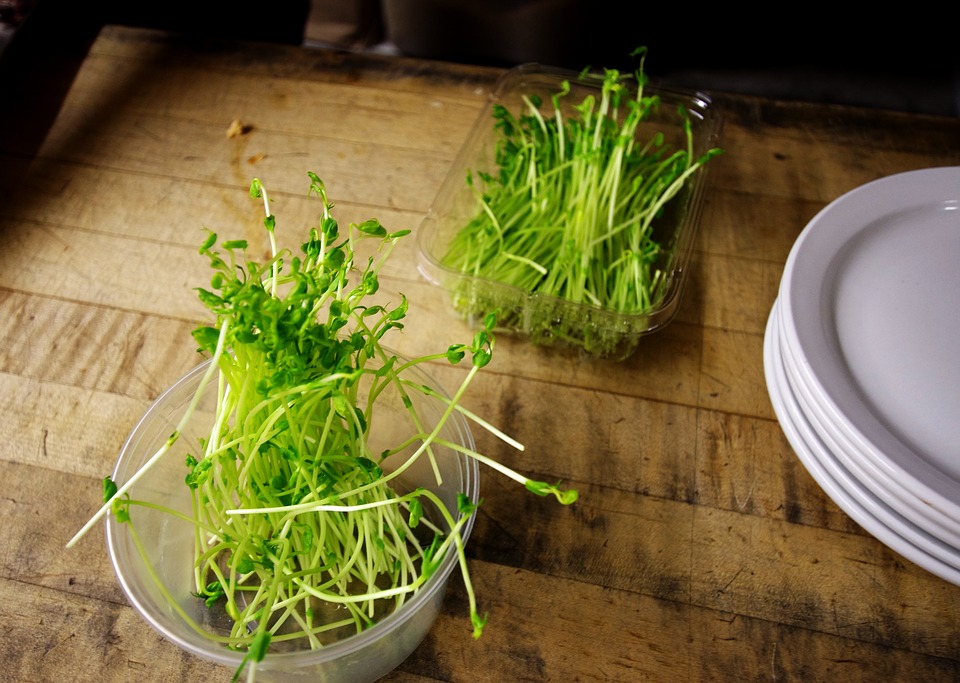
Microgreens Are Nutritionally Dense
These delicious treats are baby vegetable plants that are typically between 1 and 3 inches (2.5 to 7.0 cm) high. As very young greens, they have a concentrated nutrient content, strong aromatic flavor, and come in varying textures and colors. This makes them particularly anti-inflammatory and good to consume for a healthy lifestyle.
Sprouts versus Microgreens
While microgreens are often confused with sprouts, they are considered different foods. Sprouts have no leaves and an extremely short growing cycle of under 7 days. Microgreens, on the other hand, are often harvested 3 to 21 days after germination, when the true leaves have emerged.
It is quite easy to grow these baby plants inside, particularly during winter and can be particularly beneficial to do so as all it takes is a sunny window to grow a flat of greens. It is surprisingly inexpensive to seed, grow, and harvest microgreens and the nutrient-dense nature of the plants makes them a powerful addition to a healthy diet.
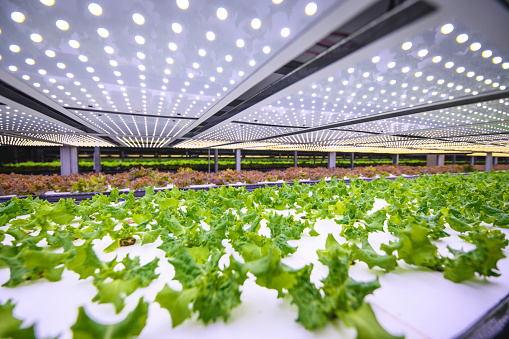
How to Start Baby Plant Seeds Indoors in Soil
Watch this quick video to see the super-easy steps for planting these small seeds indoors in soil. Plant in a sunny window or under lights and harvest in only a few days.
List of Microgreen Types and Varieties
There are dozens of different types of microgreens you can grow with hundreds of various combinations for growing such as “Asian blend” or “Red blend” or “Italian blend”. Each plant variety offers a new taste, texture, or color for you to enjoy on your salad plate. With a quick growing time and flavor-packed impact, you can easily grow them all!
Do Not Use These Seeds
Tomato, eggplant or pepper seeds should not be used for microgreens as the toxins in these nightshade plants will be more concentrated and less conducive to a healthful response.
If you are a beginner, might I suggest that you initiate your microgreen garden growing broccoli, radishes, or sunflowers – they are quick to pop up and easy to grow and harvest? Below is a list of microgreen types you can tap into for lots of nutrition.
- Amaranth
- Arugula
- Basil
- Beet
- Bok choy
- Broccoli
- Cabbage
- Carrot
- Cauliflower
- Celery
- Chard
- Chicory
- Chives
- Cilantro
- Cress
- Cucumbers
- Dill
- Endive
- Escarole
- Fennel
- Garlic
- Kale
- Kohlrabi
- Leek
- Lettuces
- Mache
- Melon
- Mint
- Mustard
- Parsley
- Pea shoots
- Quinoa
- Radicchio
- Radish
- Rosemary
- Sage
- Spinach
- Squash
- Sunflower
- Watercress
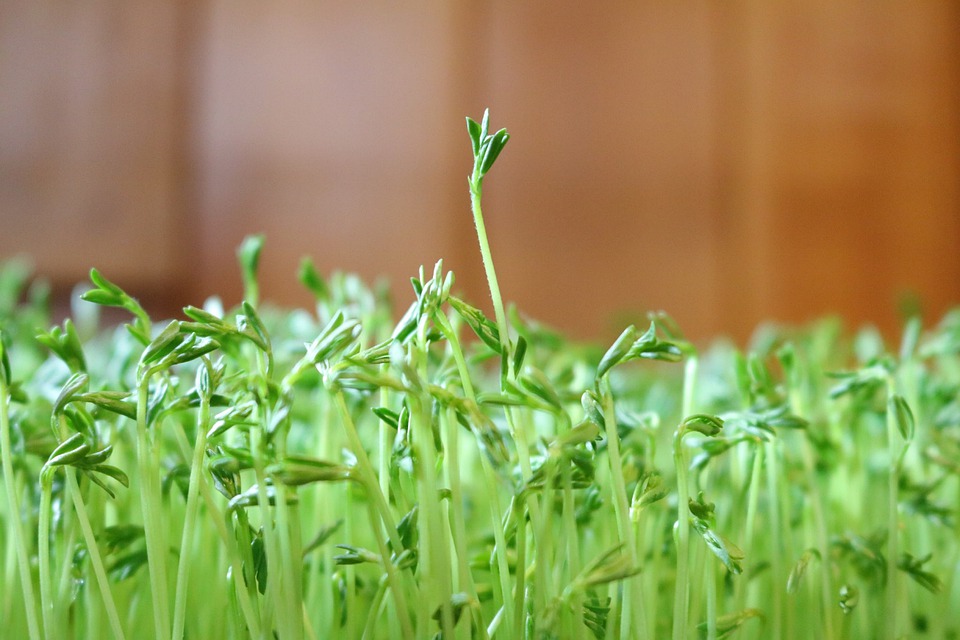
Best Micro Seed Products to Order
** JUST CLICK THROUGH THE LINKS BELOW TO LEARN MORE or MAKE A PURCHASE. **
- The Botanical Interests Microgreens Seed Collection
- Ciao Bella Blend – Botanical Interests Organic Ciao Bella Basil Blend Microgreens Seeds – Large packet
- Wonder Beet Seeds – Botanical Interests Heirloom Early Wonder Beet Microgreens Seeds – Large packet
- Mild Mix – Botanical Interests Mild Mix Microgreens Seeds – Large packet
- Sunflower – Botanical Interests Sunflower Microgreens Seeds – Regular size packet
- Umami Asian Blend – Botanical Interests Organic Umami Asian Blend Microgreens Seeds – Large packet
- Upland Cress – Botanical Interests Heirloom Upland Cress Microgreens Seeds – Large packet
- Seed Assortment – True Leaf Market Seed Assortment – Soil-based growing
- A Dozen Microgreen varieties – True Leaf Market Basic Dozen Microgreens – Soil-based growing
- Purple Radish – True Leaf Purple Radish – 1 lb
- Broccoli – True Leaf Broccoli Microgreens – 1 lb
- Sunflower – True Leaf Sunflower Microgreens Seeds – 1 lb
Above is a list of my favorite seeds which will help you create nutritiously dense itty-bitty baby superheroes. It is a smart plan to buy the seeds in bulk for better money savings should you want to grow multiple batches. Perfect for home or small business growing, these seeds can get you started with your microgreens and keep you growing strong.
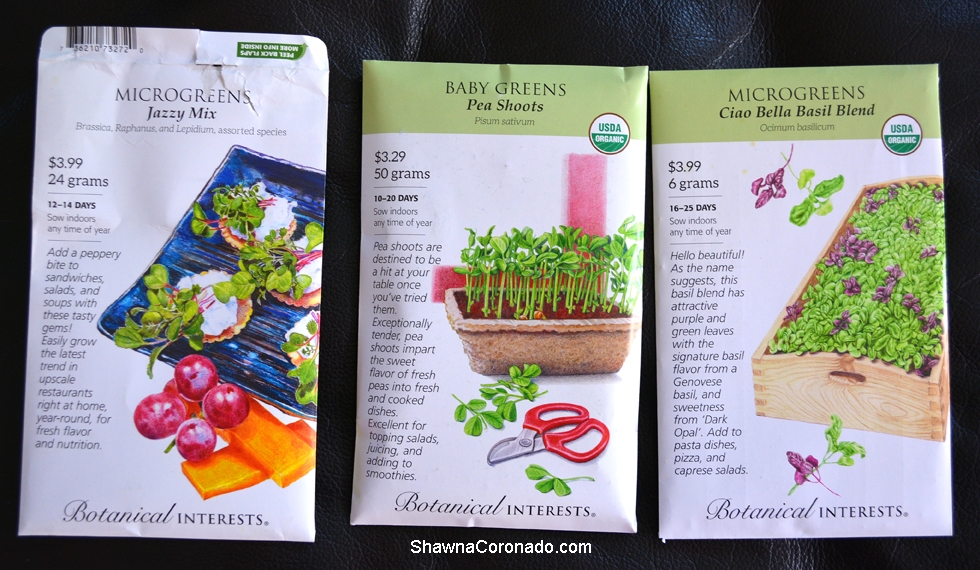
Mini Plants Help Add Nutrient Dense Food Security
After the devastating pandemic we have had, many of us are trying to figure out smart ways to address food security. Microgreens are remarkably nutrient-dense little plants that ANYONE (including you) can grow inside their home. They are filled with up to 40 times the vitamin level of plants that are full-sized and are listed as one of the easiest vegetables to grow both indoors and outdoors.
Supplementing your regular grocery spending by growing microgreens can contribute to healthier vitamin levels and more nutrition in your diet. You could also grow microgreens and donate to local food pantries or to your neighbors in order to help your community with food security as well.
Favorite Microgreens
My favorite mini superheroes to grow, based on how absolutely easy they are to start, are broccoli, radish, or sunflower microgreens. All you need to get started is a sunny window, some seeds, a growing tray, and my book to guide you.
